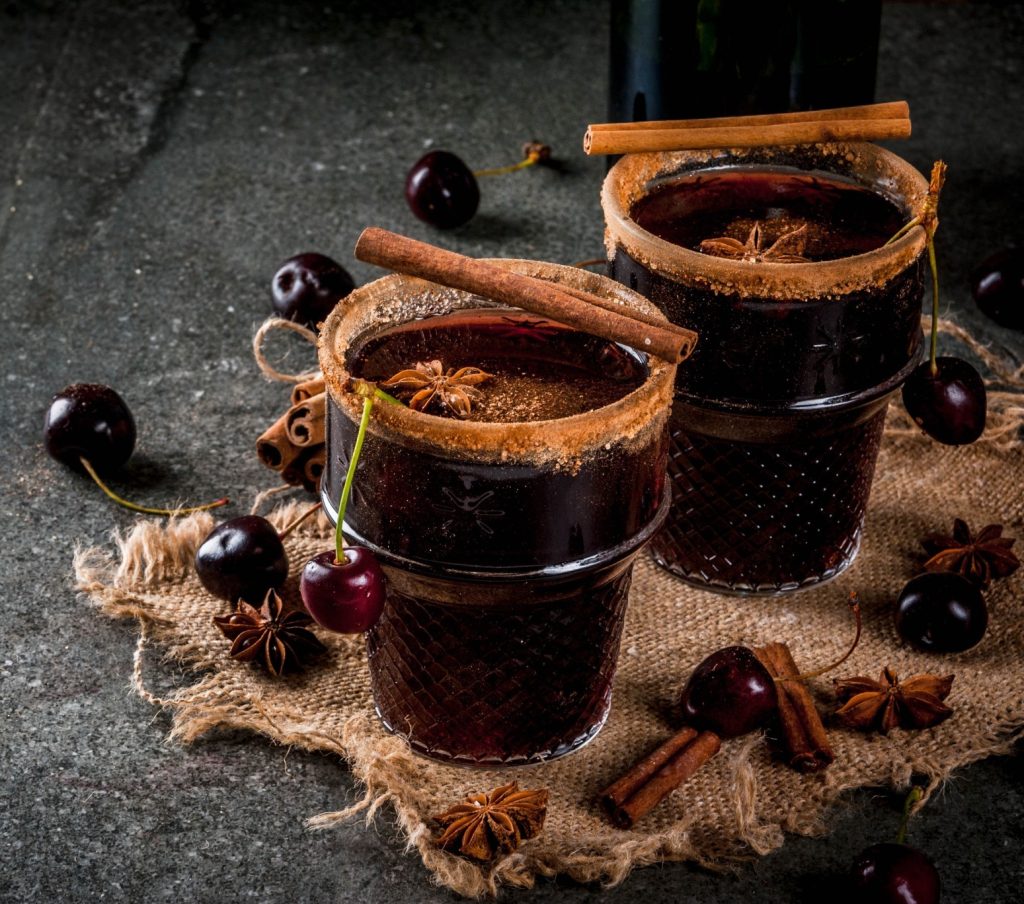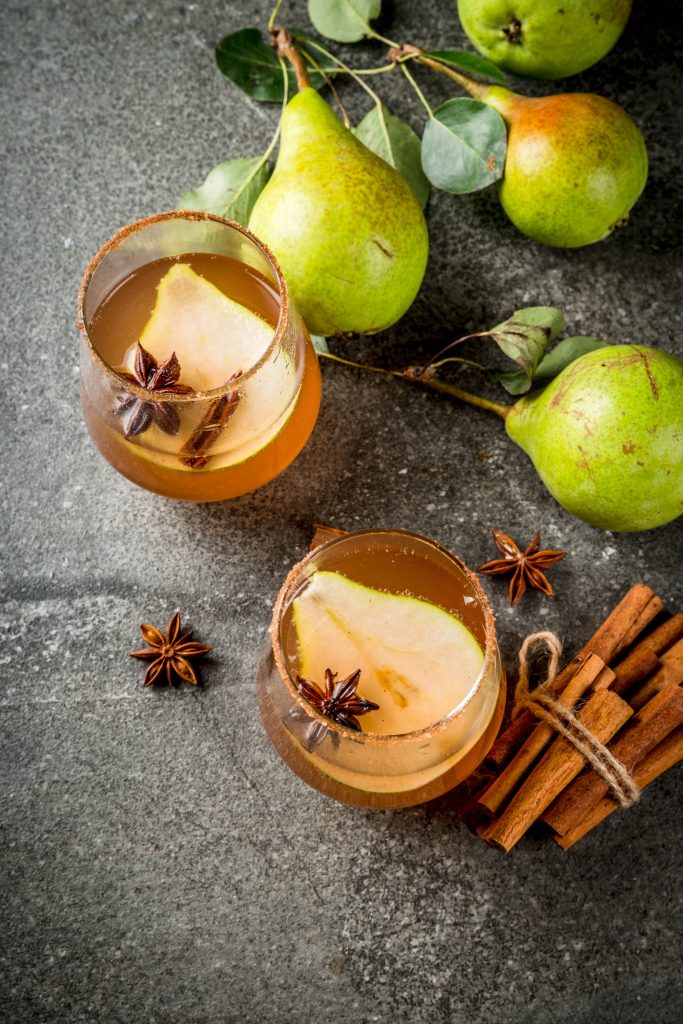There’s nothing like the refreshing taste of pear hard cider to welcome the crisp, cool days of fall. This deliciously light and fruity beverage is perfect for sipping on during the autumn months, offering a unique twist on traditional autumn hard cider. Whether you’re already a fan of pear cider or looking to try something new, this easy hard pear cider recipe is the perfect way to enjoy the season. With just a few ingredients and some patience, you’ll learn how to make hard pear cider right at home and impress your friends with your cider-making skills.

Homemade pear hard cider is a fun and rewarding project that allows you to customize the flavor to your liking. Plus, it’s surprisingly simple to make with minimal equipment and ingredients. Whether you want to make a single gallon for personal enjoyment or a larger batch for a gathering, this recipe will walk you through the process.
This is one of my favorite autumn cocktails and it’s the perfect Thanksgiving cocktail. I love to serve this along with a fall charcuterie board. Make sure to check out my article to find out how to make the best fall charcuterie board ideal for entertaining friends and family.
What is the Best Yeast for Pear Cider?
The best yeast for making pear hard cider depends on the type of flavor profile you’re looking for. Champagne yeast is a popular choice because it ferments dry, producing a crisp and clean cider with higher carbonation potential. Cider yeast, specifically designed for fruit ciders, retains more of the natural pear flavor while adding complexity. Either option works well for this recipe, but cider yeast may provide a more traditional pear cider flavor.


Easy Pear Hard Cider Recipe
Ingredients
- 10-12 ripe pears (about 4-5 pounds) or 1 gallon of pear juice
- 1/2 teaspoon pectic enzyme (optional, for clarity)
- 1/4 teaspoon yeast nutrient (optional)
- 1/2 teaspoon wine yeast (recommended yeast: Champagne yeast or cider yeast)
- 1/4 cup sugar (optional, for extra sweetness)
- Water (if needed, to top off)
- Sanitizer (for equipment)
- EQUIPMENT
- Fermentation jug (1-gallon size)
- Airlock and stopper
- Funnel
- Large pot (if cooking pears)
- Strainer or juicer (if using fresh pears)
- Hydrometer (optional, to measure sugar content)
Instructions
Prepare the Pears
If using fresh pears, wash, core, and chop them into small pieces. You can either juice the pears using a juicer or cook them in a large pot with enough water to cover the fruit. If cooking, simmer the pears for 20-30 minutes, then strain the mixture to collect the juice. If using store-bought pear juice, skip this step.
Sanitize Equipment
Before starting, make sure to sanitize all of your equipment, including the fermentation jug, funnel, and any tools you will use. This prevents unwanted bacteria or wild yeasts from affecting the cider.
Add the Juice to the Fermentation Jug
Using a funnel, pour the pear juice into the fermentation jug. If you’re short on juice, you can top off the jug with a bit of water until you reach the 1-gallon mark. Add the pectic enzyme and yeast nutrient if using, and stir gently to combine.
Add Sugar (Optional)
If you prefer a sweeter pear hard cider, dissolve 1/4 cup of sugar into a small amount of warm water and add it to the pear juice. This step is optional and depends on your taste preference.
Add the Yeast
Sprinkle the wine yeast over the top of the pear juice. You can use either Champagne yeast or cider yeast, both of which work well for this recipe. Close the fermentation jug with a stopper and attach an airlock.
Fermentation
Place the fermentation jug in a cool, dark place (around 60-75°F) and let it ferment for about 2-3 weeks. The yeast will convert the sugars into alcohol, and you’ll notice bubbling in the airlock as the process occurs.
Rack the Cider
Once fermentation has slowed down and the bubbling stops, your pear cider is ready to be racked. Carefully siphon or pour the cider into clean bottles, leaving any sediment behind.
Bottle and Age
Cap the bottles tightly and let them sit for another 1-2 weeks to carbonate, or enjoy it as still cider. If you want a sparkling cider, add a small amount of priming sugar before bottling.
Serve
Chill the cider before serving. Rim the glasses with brown sugar and garnish with a thin slice of pear or a cinnamon stick for an extra festive touch.
Notes
Alcohol: Approx. 5-6% ABV
Nutrition Information:
Yield: 16Amount Per Serving: Calories: 110Carbohydrates: 10gSugar: 7g
Tips for Making the Best Hard Pear Cider
- Choose ripe pears: The juicier and riper the pears, the better the flavor of your cider.
- Monitor fermentation: Keep an eye on the airlock to ensure the fermentation process is progressing. Once the bubbling slows, your cider is almost ready.
- Adjust sweetness: If your cider is too dry for your taste, you can add a bit of sugar or honey after fermentation.
- Patience is key: The longer you let your cider age, the more complex the flavors will become.

Variations: Alcohol-Free Pear Cider
To make an alcohol-free version of this recipe, simply skip the yeast and fermentation process. Instead, combine fresh pear juice with spices like cinnamon, cloves, and star anise, and heat the mixture on the stovetop. This creates a warm and comforting pear cider that’s perfect for fall gatherings and can be served hot or cold. You can sweeten it with honey or sugar to taste and garnish with a pear slice or cinnamon stick for extra flavor.
Other Great Fall Cocktails
Pumpkin Spice Mulled Wine
This pumpkin spice mulled wine combines the warmth of white wine with the rich, comforting flavors of pumpkin purée, cinnamon, and nutmeg. It’s the perfect autumn drink for cozy gatherings or festive holiday parties, offering a delightful blend of spice and sweetness.
Cherry Mulled Wine
The cherry mulled wine blends the boldness of red wine with the fruity sweetness of cherries, accented by warm spices like cinnamon and cloves. Ideal for winter nights and holiday celebrations, this easy recipe is both flavorful and inviting.

Apple Cider Mojito
These apple cider mojitos are the perfect fall cocktail to transition from summer to fall. The classic mojito gets an autumn makeover with the addition of apple cider and fresh apples.
Sparkling Apple Cider Sangria
This sparkling apple cider sangria is the idea fall cocktail, combining the taste of crisp apples with a touch of apple cider and the fragrant flavor or cinnamon it combines everything I love about fall into one glass.
Easy Pumpkin Sangria Recipe
Craving a simple, tasty fall sangria recipe with white wine? Look no further, because this pumpkin sangria has got you covered! This delicious fall cocktail wraps up all the cozy feels of fall into a single, refreshing glass. It takes white wine sangria, a traditional favorite, and jazzes it up with classic fall flavors like spiced rum, pumpkin pie syrup, pumpkin puree and cinnamon.





